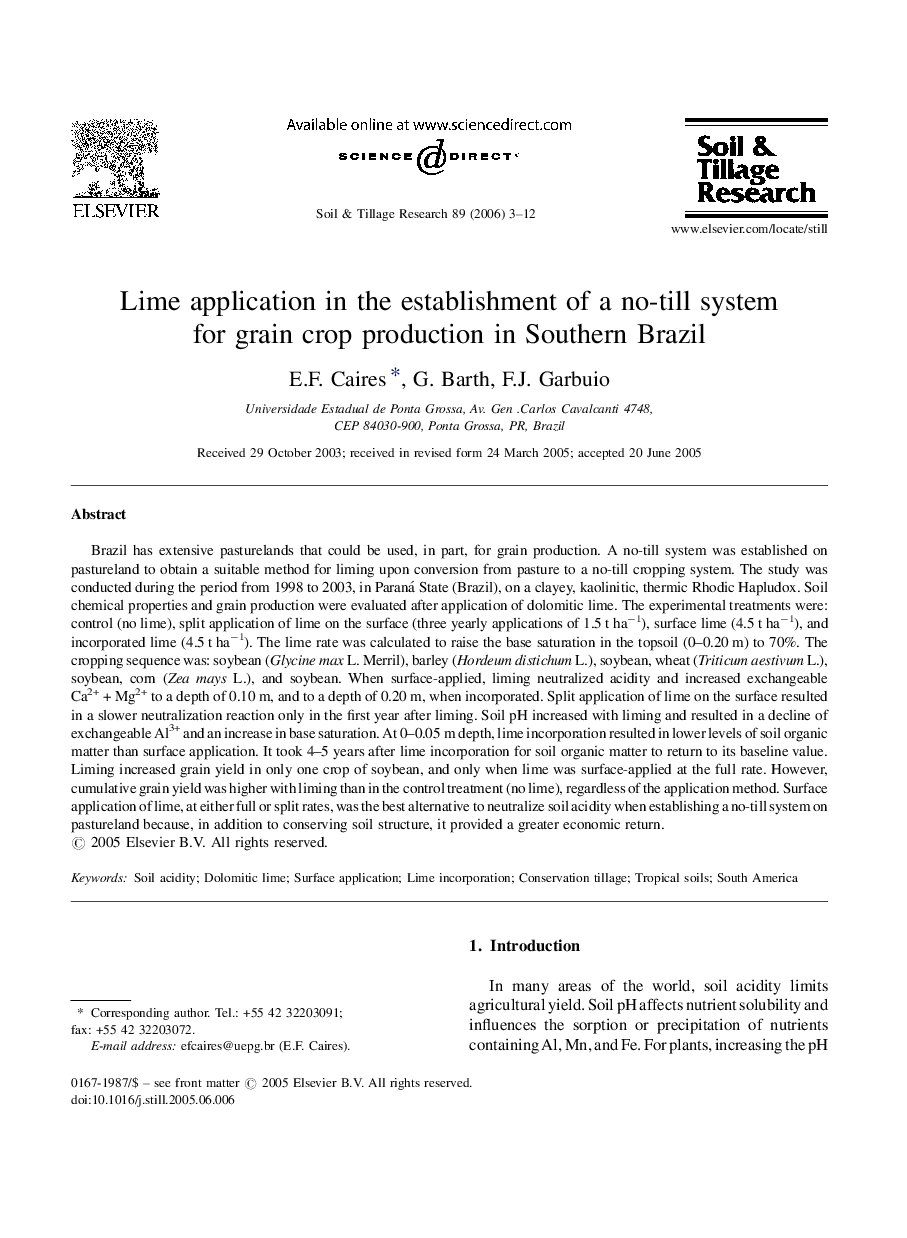| کد مقاله | کد نشریه | سال انتشار | مقاله انگلیسی | نسخه تمام متن |
|---|---|---|---|---|
| 306607 | 513105 | 2006 | 10 صفحه PDF | دانلود رایگان |

Brazil has extensive pasturelands that could be used, in part, for grain production. A no-till system was established on pastureland to obtain a suitable method for liming upon conversion from pasture to a no-till cropping system. The study was conducted during the period from 1998 to 2003, in Paraná State (Brazil), on a clayey, kaolinitic, thermic Rhodic Hapludox. Soil chemical properties and grain production were evaluated after application of dolomitic lime. The experimental treatments were: control (no lime), split application of lime on the surface (three yearly applications of 1.5 t ha−1), surface lime (4.5 t ha−1), and incorporated lime (4.5 t ha−1). The lime rate was calculated to raise the base saturation in the topsoil (0–0.20 m) to 70%. The cropping sequence was: soybean (Glycine max L. Merril), barley (Hordeum distichum L.), soybean, wheat (Triticum aestivum L.), soybean, corn (Zea mays L.), and soybean. When surface-applied, liming neutralized acidity and increased exchangeable Ca2+ + Mg2+ to a depth of 0.10 m, and to a depth of 0.20 m, when incorporated. Split application of lime on the surface resulted in a slower neutralization reaction only in the first year after liming. Soil pH increased with liming and resulted in a decline of exchangeable Al3+ and an increase in base saturation. At 0–0.05 m depth, lime incorporation resulted in lower levels of soil organic matter than surface application. It took 4–5 years after lime incorporation for soil organic matter to return to its baseline value. Liming increased grain yield in only one crop of soybean, and only when lime was surface-applied at the full rate. However, cumulative grain yield was higher with liming than in the control treatment (no lime), regardless of the application method. Surface application of lime, at either full or split rates, was the best alternative to neutralize soil acidity when establishing a no-till system on pastureland because, in addition to conserving soil structure, it provided a greater economic return.
Journal: Soil and Tillage Research - Volume 89, Issue 1, August 2006, Pages 3–12